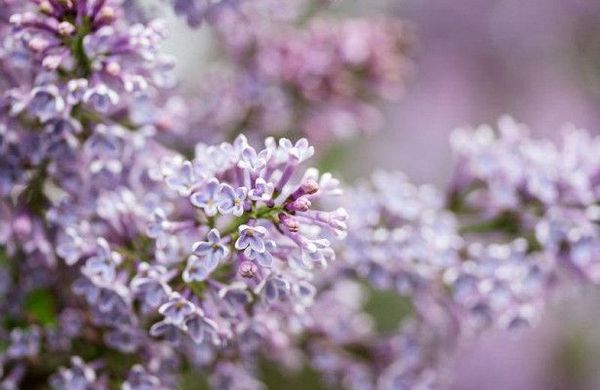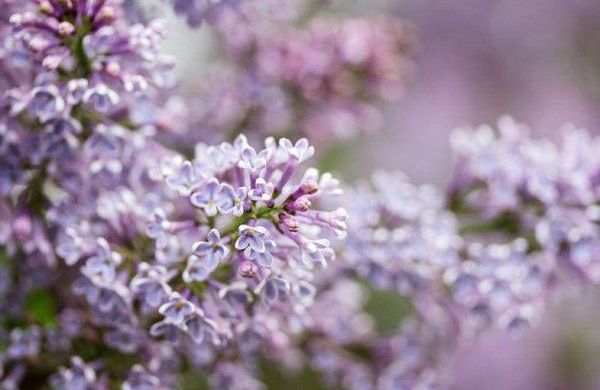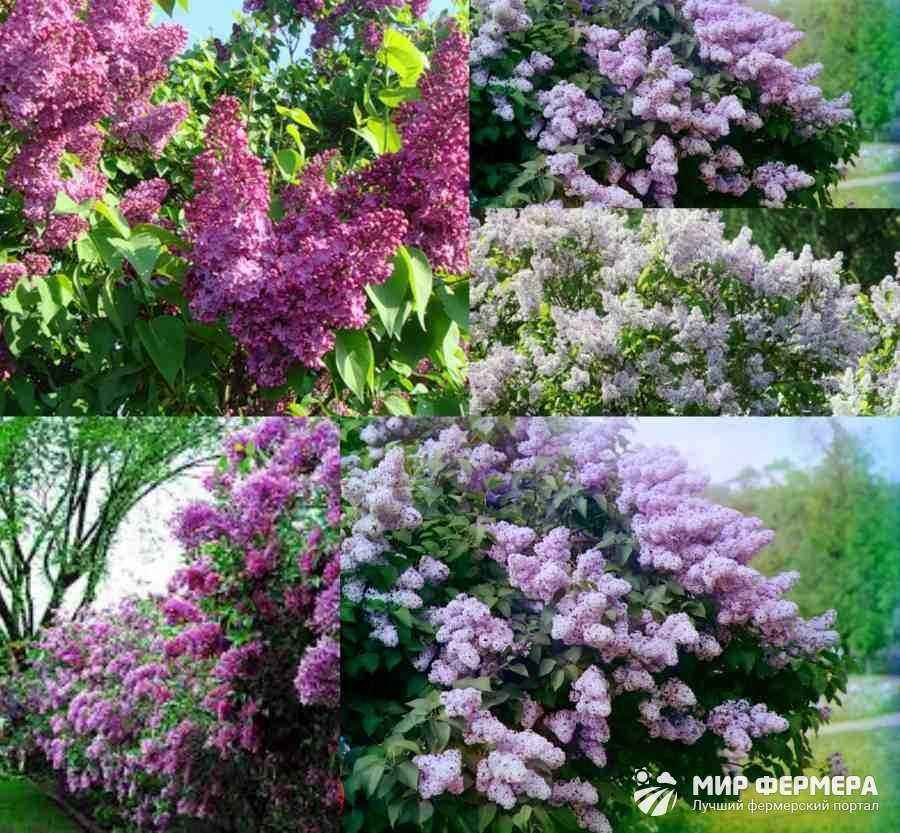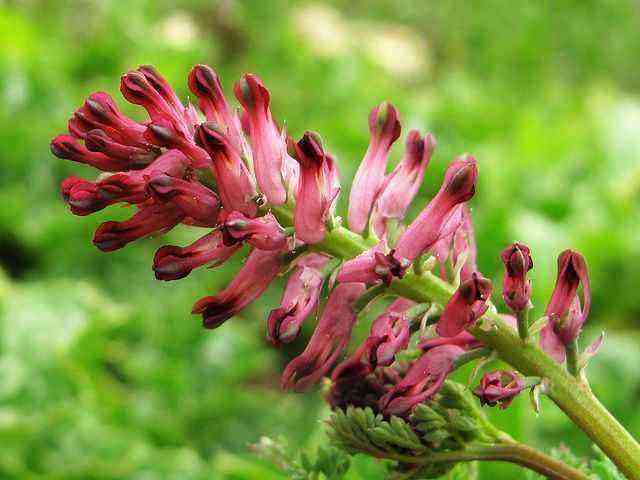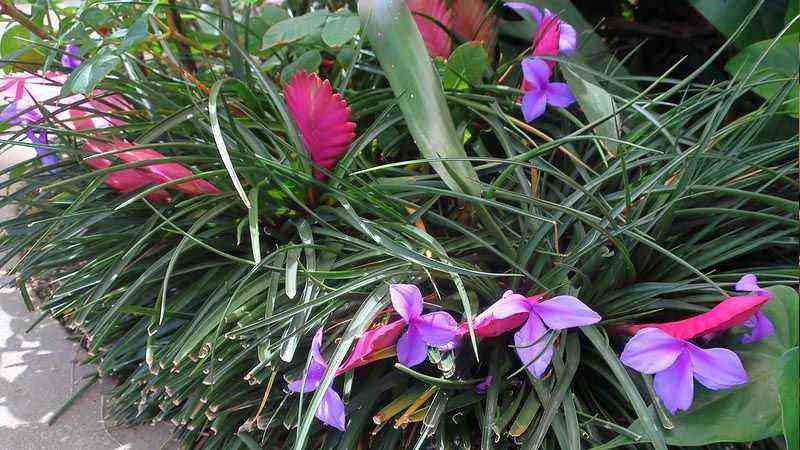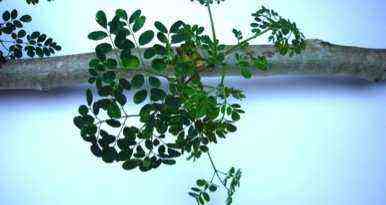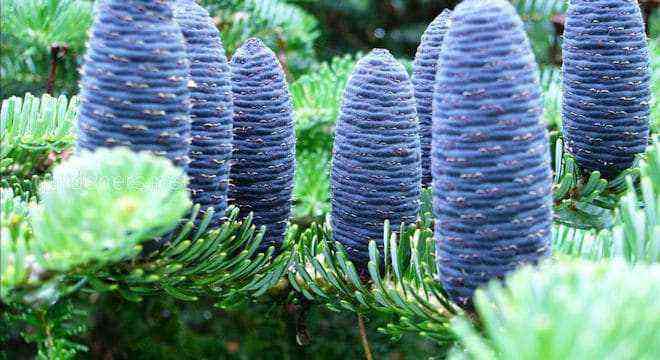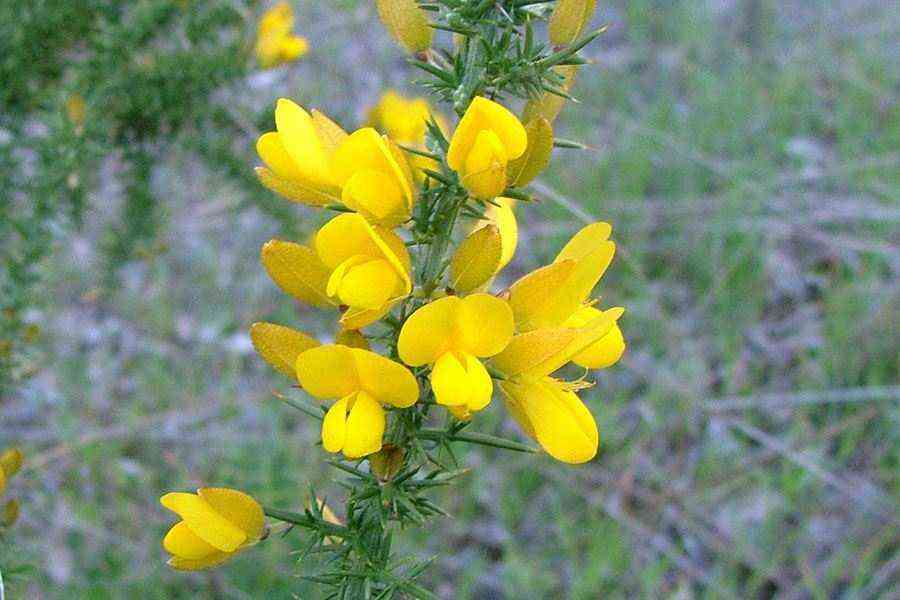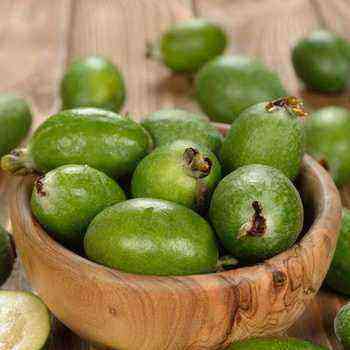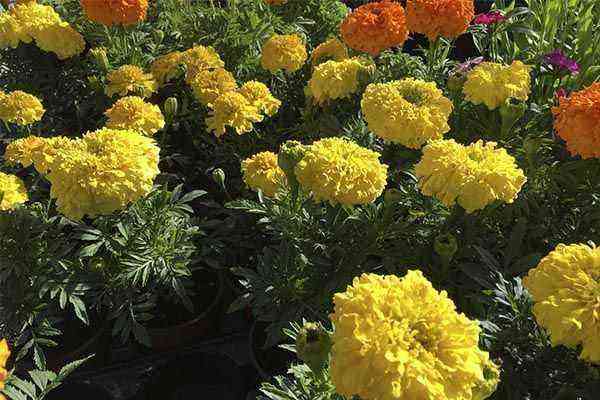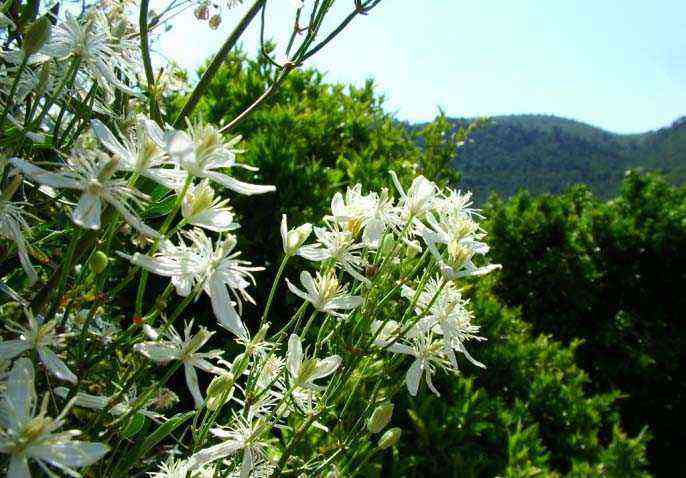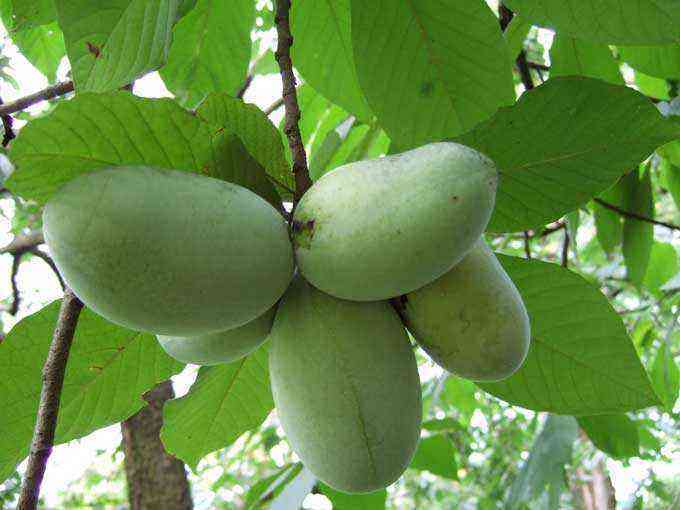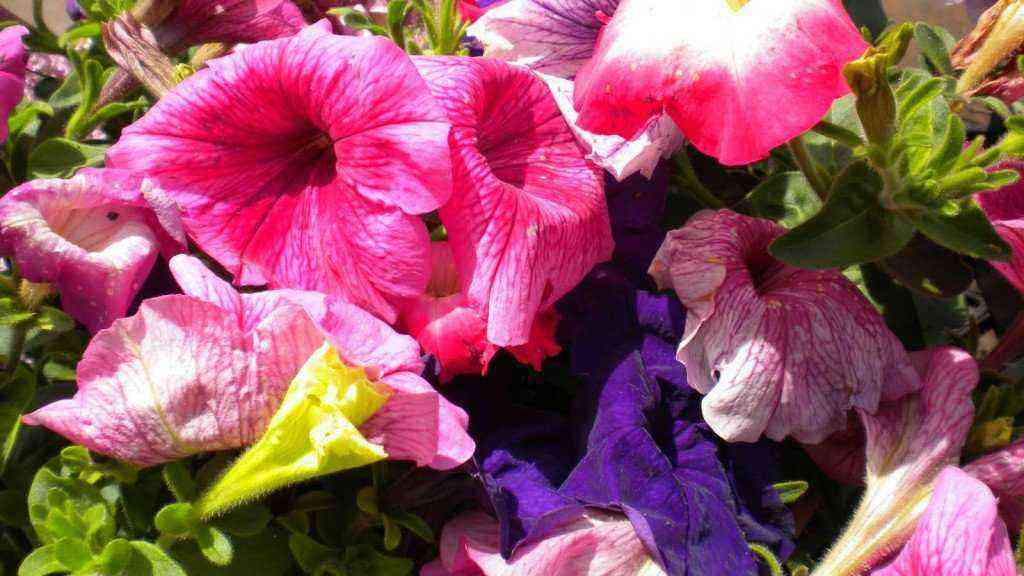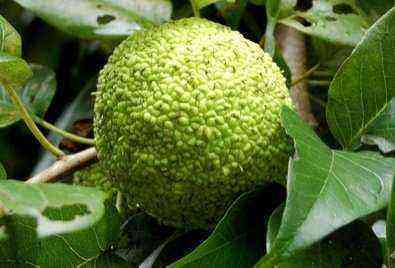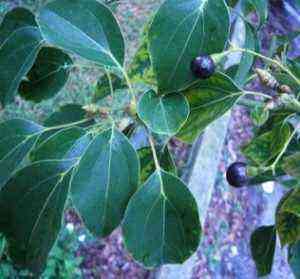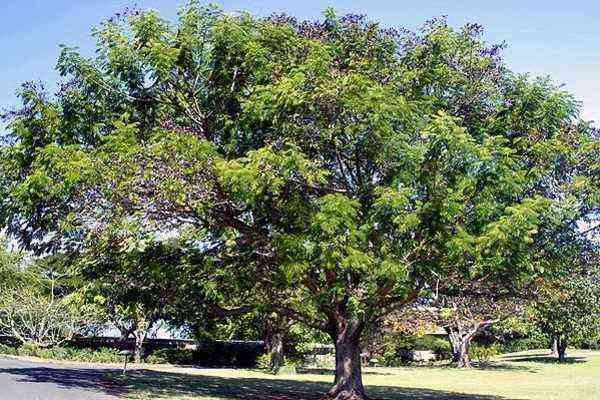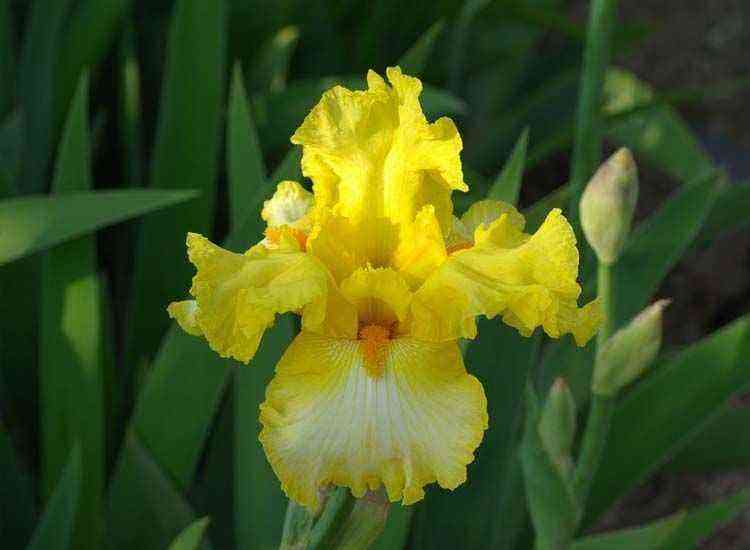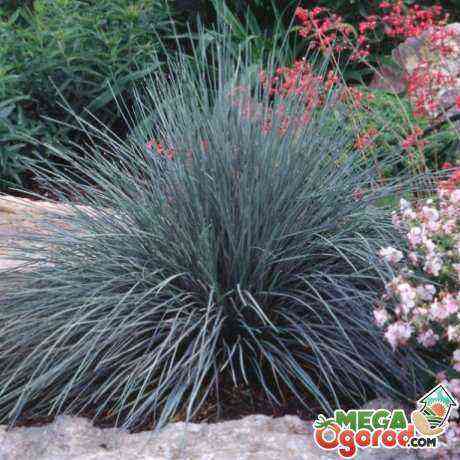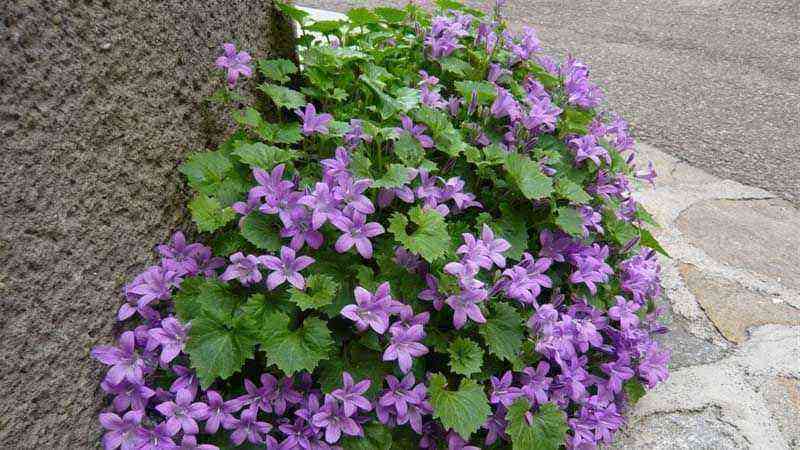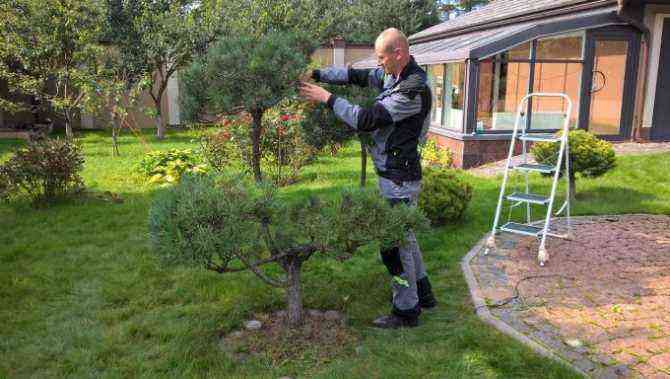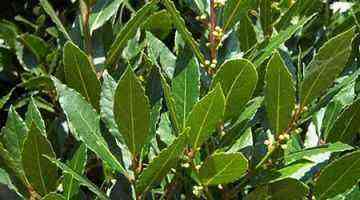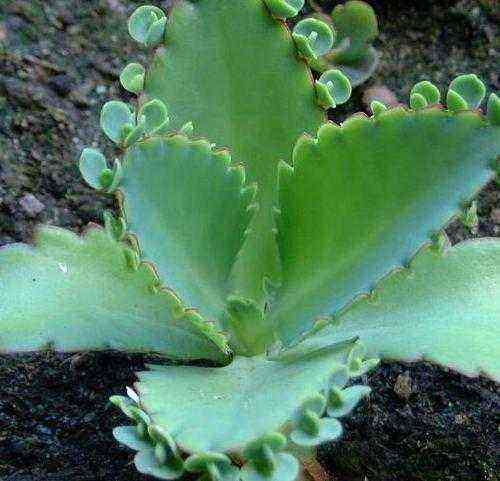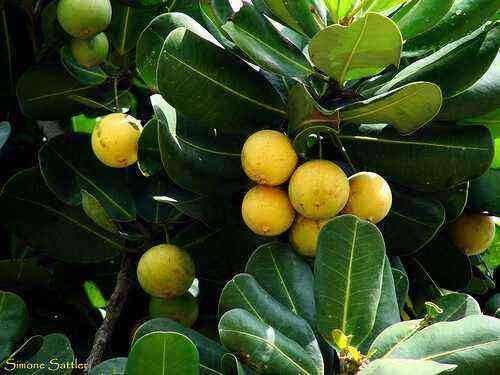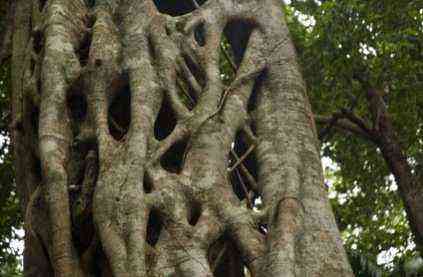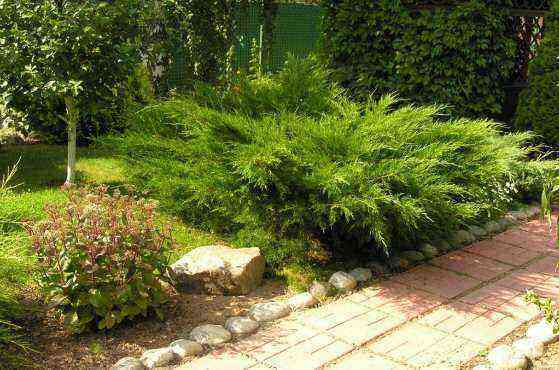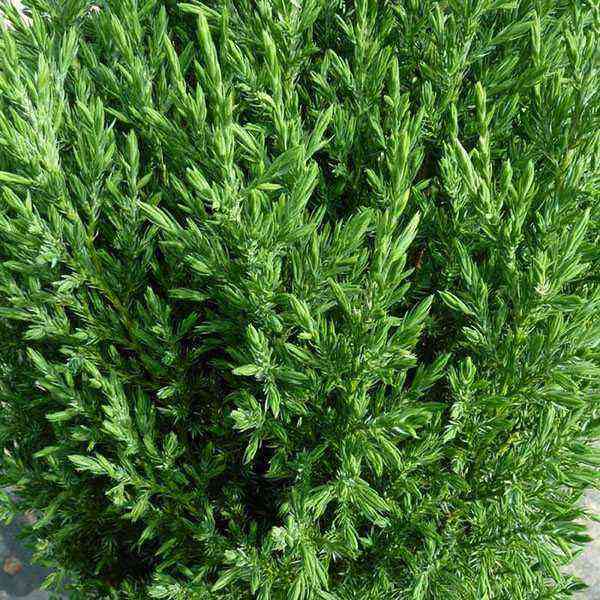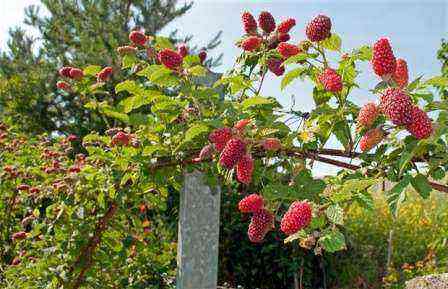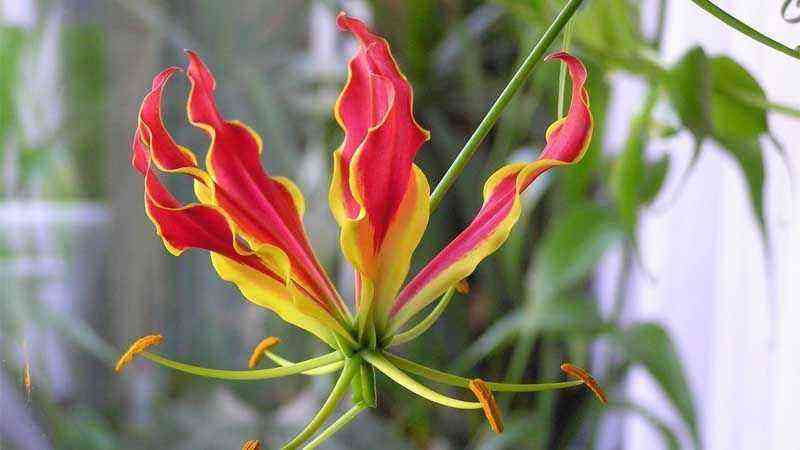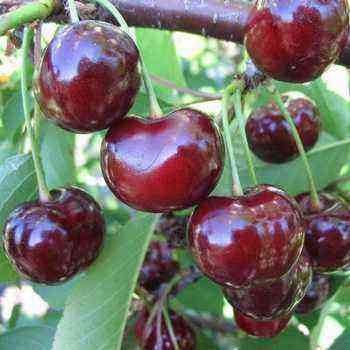In conditions close to the climate of central Russia, common lilac blooms in May or June. Inflorescences are pyramidal-shaped paired panicles, the length of which is 10-20 cm. Small flowers are 1-1,2 cm in diameter, have a strong aroma, are located in panicles – paired bundles, each of which can contain from three to five flowers. Lilac is unpretentious – it can grow on any soil, but loamy, humus-rich will be the best for it. Lilac develops well and can bloom profusely, provided that the soil is deeply cultivated before planting, and mineral, organic fertilizers are applied to it.
What time of year does it bloom
The flowering time of a culture largely depends on climatic conditions. Most varieties begin to bloom at the end of May (eg Persian, Hungarian or Common). But there are varieties that bloom in early May (for example, a Chinese variety).
Figure 1. Photo of a shrub in bloom
If you want to enjoy the scent of this shrub in summer, we recommend planting an Amur variety, which blooms later than others – in July. However, it should be borne in mind that the beginning of flowering largely depends on the ambient temperature. If the spring is early and warm, and the temperature is stable above +15 degrees, you can count on an earlier start of flowering.
Inappropriate place
Another fairly common reason that lilacs stretch, do not bloom or bloom poorly is an unsuccessfully chosen place for it: too shaded or windy. The main requirements for a site where the lilac will feel comfortable are as follows:
- most of the day, the place should be well lit by the sun: the western and eastern sides of the garden are suitable, but on the southern side the plant risks getting sunburn;
- the site should be located on a plain or, in extreme cases, on a gentle slope;
- the place should be sheltered from cold winds.
It is not recommended to plant lilac bushes next to a pine or spruce. How to correctly and effectively place lilacs in the garden on a suburban area, read our material:
Where and next to what to plant lilacs: 4 ideas for a spectacular flower garden Do not know in which corner of the garden to plant lilacs? This article will help you choose a suitable location for a fragrant plant.
Why lilacs don’t bloom: reasons
The lack of flowering shrubs is a fairly common problem among gardeners. As a rule, this is due to improper care or poorly chosen landing site.
But there are other reasons for the lack of flowering:
- Lack of light Is the most common reason. This culture belongs to light-loving plants, and if planted in the shade of trees or close to buildings, it will not bloom.
- Incorrectly selected area can also lead to the fact that the ornamental shrub will not be covered with buds. You can not plant it in wetlands or in places with a close location of groundwater.
- Exposure to diseases and pests weakens the plant, and it spends nutrients on the restoration of shoots, and not on the formation of buds.
In addition, the lack of flowering can be explained by improper care: lack or excess of fertilizers, lack of pruning, or excessive watering.
Regular pruning
In order for the lilac to bloom and have a beautiful crown shape, it must be regularly and correctly trimmed. Lilacs are not pruned in the fall, as this is fraught with a lack of flowering next season.
It is advisable to cut off excess branches immediately after the end of the flowering period. Anti-aging pruning is performed every 3 years. It involves cutting off all branches that make the crown overly dense, or directed towards the inside of the bush.


Old, dry and damaged branches must be removed. In places where the bush is cut, it is necessary to treat it with garden varnish to prevent infection.
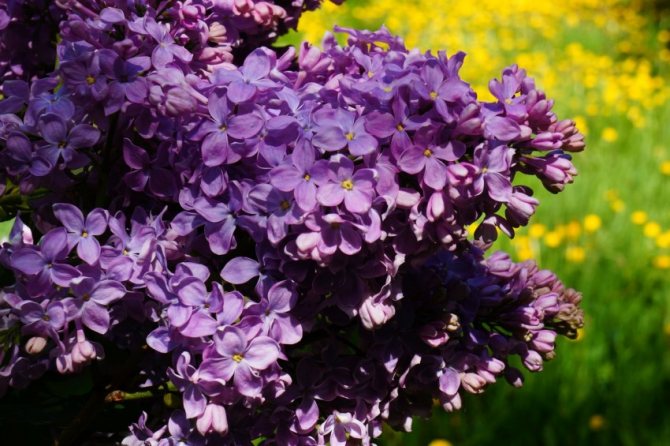
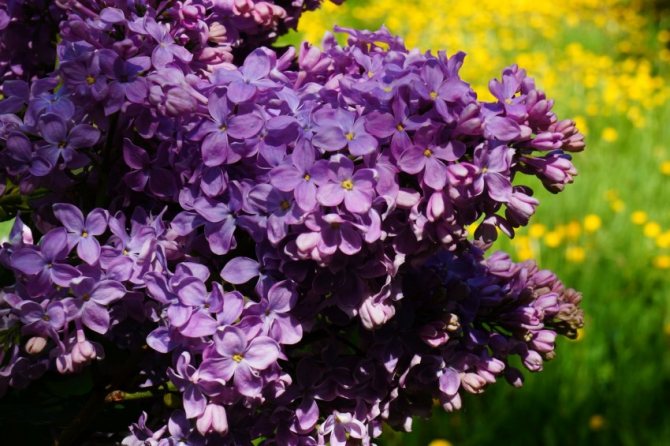
With proper care and regular pruning, you will ensure a beautiful and lush bloom of lilacs every season. But, in addition to care, do not forget about pest and disease control of shrubs.

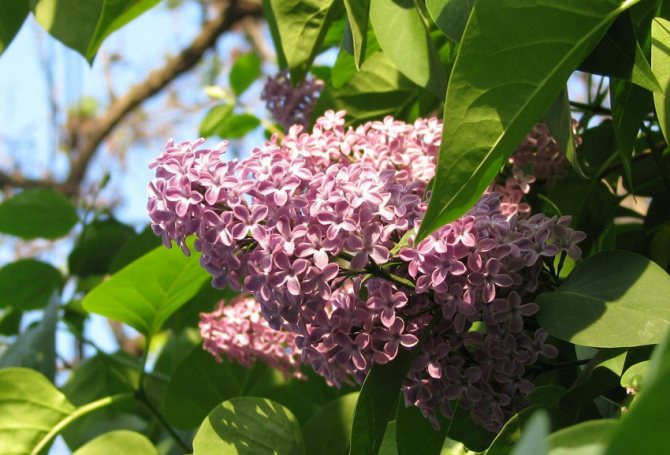
How to make lilacs bloom
If you planted a seedling on your site, and it successfully took root, grew, but did not begin to bloom, you should reconsider the methods of caring for the shrub. Ordinary garden culture takes root well in any area, but special conditions must be created for varietal seedlings.
Let’s try to figure out what action needs to be taken to make the lilac bloom.
Care
First of all, you should choose the right site for planting. It should be well lit by the sun in the first half of the day, and moderate shading is allowed in the second. Also, the site must be protected from drafts and strong gusts of wind.
Note: The landing site should not be swampy, since the close location of groundwater negatively affects the growth of the shrub.
The soil should be light and crumbly: peaty or sandy. If your site has heavy soils, a special lightweight substrate for this culture is added to the planting hole.
After disembarkation, the bush is looked after as follows (picture 2):
- Water the shrubs regularly, avoiding waterlogging of the soil, and remove weeds;
- In early spring, feed the crop with organic fertilizers;
- In early May, it is necessary to fertilize with mineral nitrogen fertilizers.


Figure 2. Caring for the culture at their summer cottage
In addition, it is necessary to mulch the soil around the shrub to prevent moisture from evaporating from the soil and to stop weeds from growing.
From the video you will learn how to properly care for lilacs so that they bloom regularly.
Watering
Despite the fact that the plant does not tolerate high soil moisture and practically does not take root in swampy areas, the plant should be watered regularly.
In hot weather, it is necessary to water not only the soil around the shrub, but also to spray the leaves. At the same time, the water should not be too cold, and the procedure itself should be carried out in the morning or in the evening, so that burns do not appear on the leaves.
Every year it is necessary to water it with a lime solution: dissolve a few grams of lime powder in a bucket of water and pour it under the bush. This will help stimulate flowering.
How to prune lilacs to bloom
Pruning plays an important role in stimulating flowering. It cannot be carried out in the fall, since the removal of excess shoots will stop the formation of buds, and the next year the shrub may not bloom (Figure 3).
Note: It is recommended to remove excess branches immediately after flowering.


Figure 3. Shrub pruning scheme
Once every three years, the rejuvenation of the bush is carried out. To do this, cut out all the branches that thicken the crown or growing inside the bush. It is also necessary to remove all old and dry shoots. Places of cuts must be covered with garden varnish or oil paint so that infection does not get inside the wound.
Pests and diseases
Lilacs, like other garden plants, are susceptible to diseases and pests. To prevent this, prophylactic spraying with Bordeaux liquid or special chemicals against insects is carried out.
The most common plant diseases and pests are (picture 4):
- Fungi provoke the formation of spots of various shapes and sizes on the leaves. In the future, the leaves and inflorescences begin to fall off. In order to prevent the spread of fungi, all damaged leaves and shoots must be collected and burned, the bush must be fed with potash fertilizers and sprayed with copper preparations.
- Fitoftoroz leads to the fact that the buds on the bush do not open, and the bark becomes covered with brown spots. The leaves begin to curl, and the inflorescences dry out. All affected parts of the plant are removed and burned, after which they are sprayed with Bordeaux liquid.
- Nematodes lead to the death of the roots, as a result of which the shrub begins to gradually shed its foliage and dry out. To eliminate the pest, it is necessary to cut and burn all damaged parts and treat the soil with special chemicals against the pest. For prevention, you can plant a decorative onion near the shrub.


Figure 4. The main diseases and pests of culture: 1 – fungal diseases, 2 – late blight, 3 – nematodes
It is much easier to prevent diseases than to cure, therefore, all weeds should be removed in a timely manner, soil fertilization and preventive treatment with copper preparations and Bordeaux liquid should be carried out regularly.
Care
First of all, you need to choose the right landing site. This should be a well-sunlit area with minimal shading. It is necessary to provide protection from strong winds.
Swampy and excessively waterlogged soil will not work. If there is groundwater nearby, most likely the bush will not be able to fully develop.
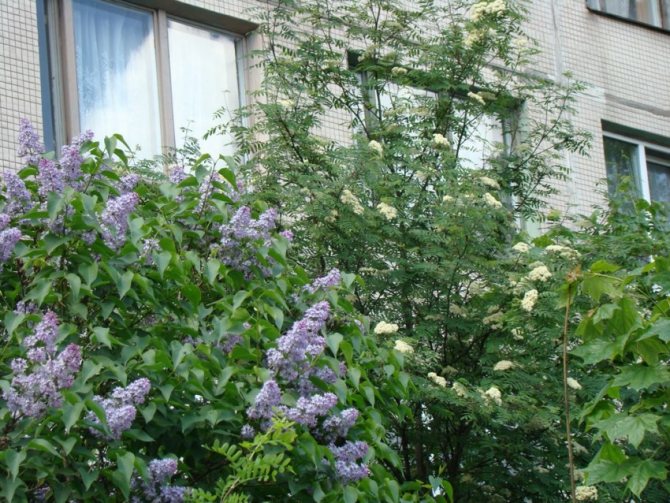
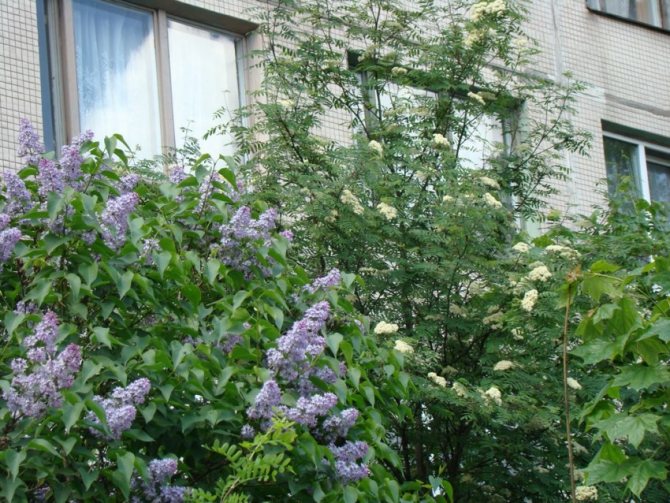
Lilacs take root well in peat and sandy soil. In the case of heavy soil, the lilac planting hole should be filled with a light substrate.
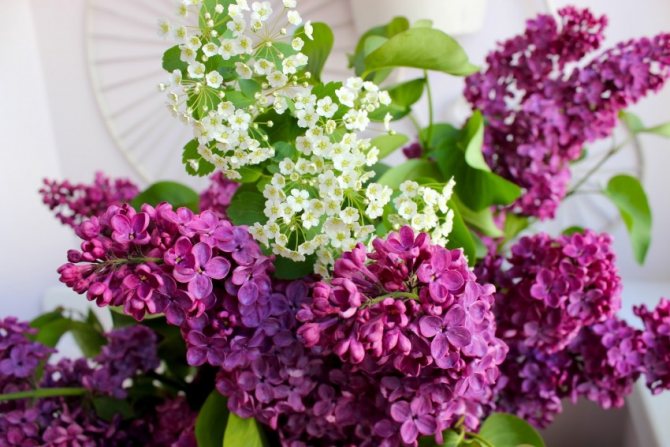
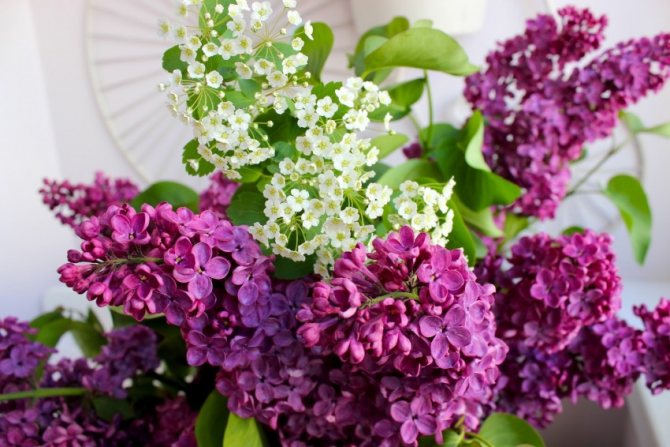
After planting, caring for lilacs consists in:
- regular watering without waterlogging;
- periodic application of organic fertilizers to the soil (in spring);
- removing weeds;
- fertilizing with nitrogen fertilizers a few weeks before flowering.
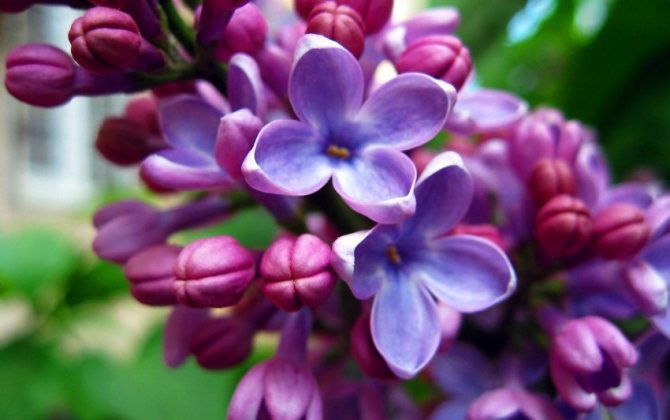
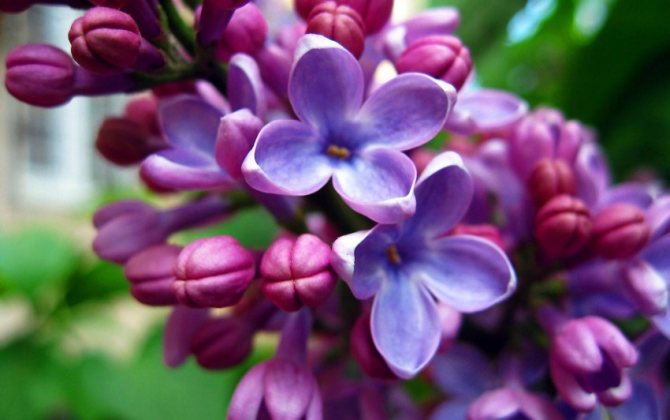
The soil should be covered with a layer of mulch to normalize moisture and prevent weed growth.
Flowering time
The time when the lilac blooms indicates that spring has completely come into its own, and summer is at hand. Depending on the variety, lilacs bloom at different times. This is usually the end of April or the beginning of May. However, cold weather can easily shift these dates by a week or two. In more northern regions, for example in Siberia, it usually blooms in the second half of May, and sometimes in early June. White lilacs tend to bloom towards the end of the month.
